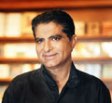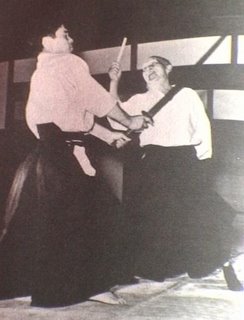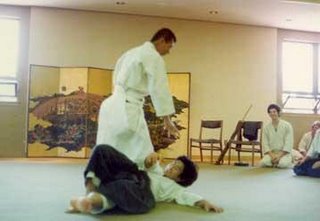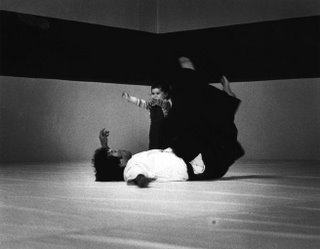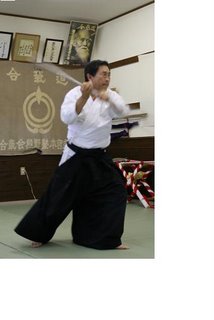
Yesterday I was in Santa Cruz to teach some classes for Linda Holiday sensei. I decided to use that occasion to drop in to the University of California, Santa Cruz for a little detective work. In February of 1970 (my last year as an undergraduate) I won the Men’s Intramural free throw competition. I made 23 of 25 attempts. If you made your last 10 you could shoot until you missed. I hit 15 additional ones and wound up with a consecutive streak of 25. I had been told a few years later that my records still held and I was curious after all these years if somehow I was still the all-time Intramural free throw champ. So I went to the East Field House, looked up the Intramural Director, and had him check his records. He hunted down an old manilla folder and found out that some years ago the competition had been discontinued and that my records still held! My 23 of 25 had been tied, so I only share that record. But my 25 consecutive makes has never been beaten, and, since there are no more contests, it is the all-time record!!!!!

Before aikido, basketball had been my passion. In fall of 1969 I took my first aikido class from Robert Frager at the UC Santa Cruz Fieldhouse. I started going to weekend aikido/energy workshops that were a collaboration between Frager sensei and Robert Nadeau. These were at Nadeau sensei’s original school in Mt. View on Castro Street. The work on centering and energy awareness had a profound effect on me. Films of Osensei were shown and vast spaces in myself that I had not been conscious of started to open. My aikido was very new and undeveloped, but I could immediately see the effect this work had in, of all things, basketball. The awareness of the center point 2” below the navel seemed to integrate everything on the basketball court. I could always shoot and score, but I now had a court awareness and a sense of timing I didn’t have before. Somehow I knew it was the aikido. I could sense where passes were going to go before the passer threw them. I could immediately discern where a defenders attention was directed and instantly create a move or shot. I felt that I had been incarnated into Rick Barry or Earl Monroe, my role models of that age. To put matters into perspective, we’re talking about pick up games at the University of California Santa Cruz gym and its intramural league games. But this gave me the real sense that there was a definite tie between my physical performance(body) and higher states of consciousness(mind). And I had heard that Ueshiba Osensei could dodge bullets, transmat himself from a pointA to a point B, and other things. So, beginning to function from a place of energetic awareness for me began on the basketball court.
For somebody who could shoot as well as I could(it was a talent and an obsession), my free throw shooting was very inconsistent. In high school I used to have to shoot jump shots to make free throws consistently. Somehow with my new centered awareness I found that I was just clicking into a flow and that the whole thing had become almost zen or aikido. There was no performance anxiety(excuse the expression), only
one pointedly being in the moment…. that moment…. any moment…..and my shot was true. Since I was now studying a martial art, I guess I had acquired a toughness and focus that I had previously lacked.
The day of the competition the person who was catching the ball and passing it back to me was a rival on an intramural team my team had beaten. He kept throwing the ball back to me in funny ways meant to disrupt my concentration and rhythm. This had the beneficial effect of having me center even more. Each shot was like a sword cut that determined life and death. Yes, I was very serious about my basketball. When I finally missed and my streak ended, I was surprised. On my own I could sometimes go for 40 in a row.
So what does this mean to me to have this record? In high school I had potential, but overall I matured physically very late. So I did not have a great basketball career to point to. At UC Santa Cruz there was no big time athletic program, so intramurals were very big. And I found that I could dominate in ways that speed and quickness and great shooting ability so allowed. I was relentless. I tried not only to dominate but almost to the point of humiliating the defender. I did not make any friends. Every year each college would pick an all-star team of intramural players and play the all-stars of the other colleges. I was never selected. A couple of years later I talked to some of the other players and they told me how they remembered that I had starred in these games. No, I was left out. So the record, for the record, means an awful lot to me, even these years later.
I am very grateful to have found aikido and to have made it my life’s path. That intensity, that almost inhuman anger and fierceness was in Japan turned into ukemi for Hikitsuchi sensei, Anno sensei, Yanase sensei, Tojima sensei. I would go at them with the same fierceness that I would in taking the ball to the hoop against a shot blocker. Only they helped me to recycle that energy into something loving,’….. something creative…. If I had my choice between being the shooting guard for the Warriors and doing what I’m doing, I go with what I have. No doubt.
I want to thank both Robert Frager and Robert Nadeau for their kind early attention, without which, I’d never have set THE record.


